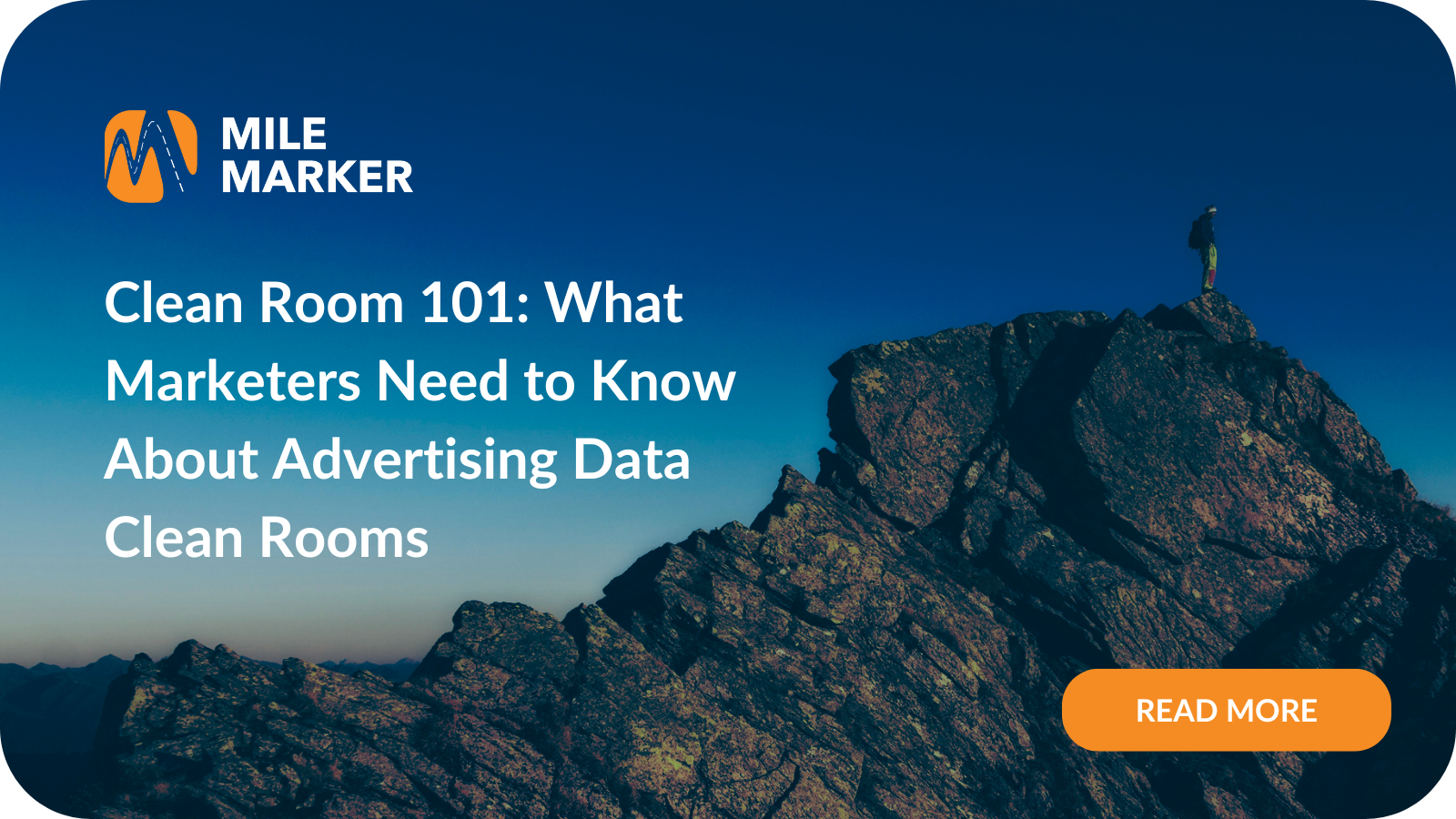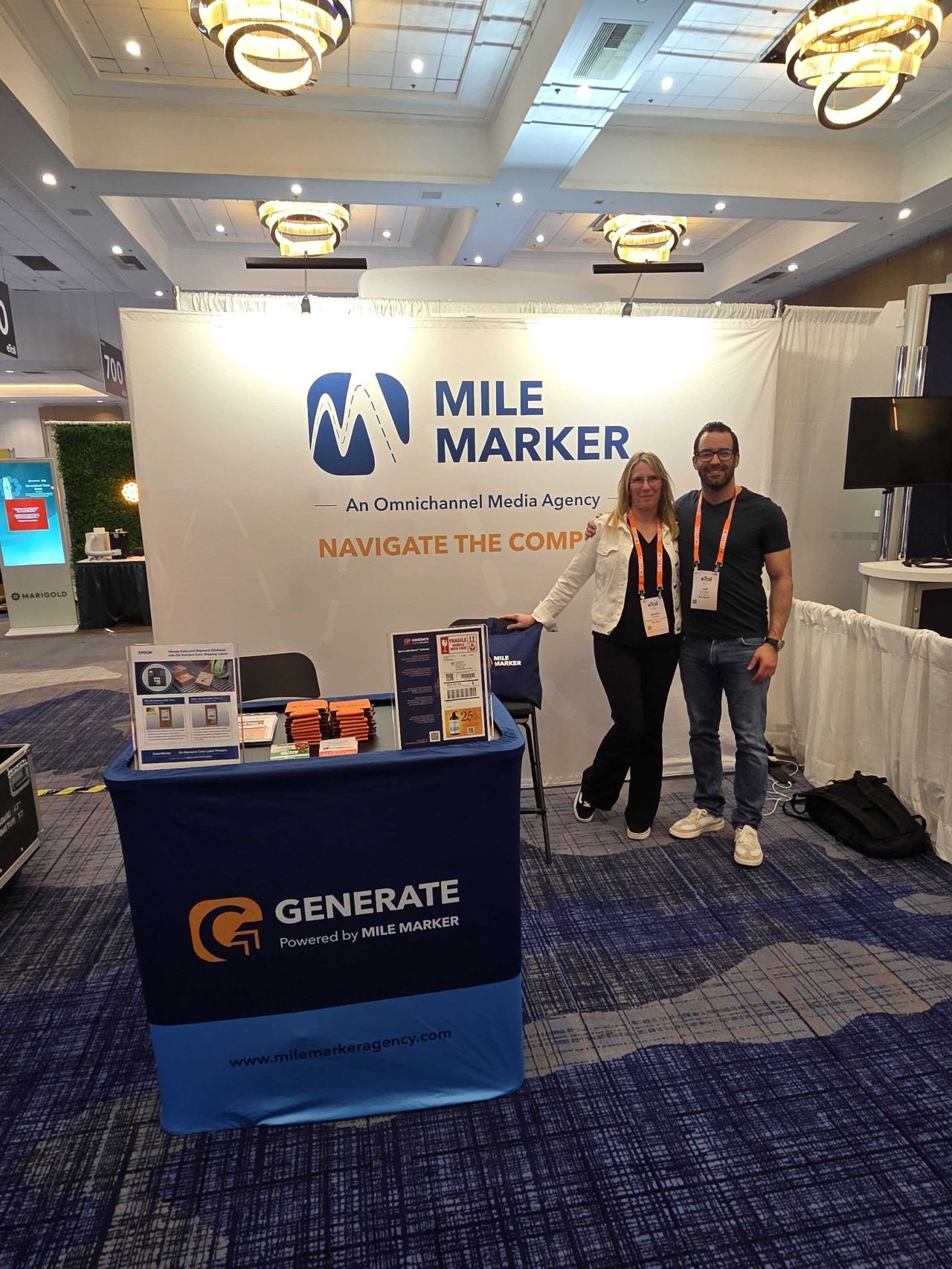By Anthony Costanzo, Chief Analytics Officer, Mile Marker
As third-party cookies continue to be phased out across platforms like Safari and Firefox, and with Google delaying their full phase-out, marketers are seeking more durable solutions to cookies in a privacy-first world. Advertising data clean rooms have emerged as crucial solutions for marketers. In this Clean Room 101 guide, we’ll explain what a clean room is, how it works, and why your marketing strategy may need one.
What Is a Clean Room in Advertising?
A data clean room is a secure and privacy-compliant environment where multiple parties can share and analyze first-party, second-party, or third-party data without exposing personally identifiable information (PII). These platforms allow advertisers, publishers, and retail media networks to collaborate while ensuring strict data privacy and security. However, it’s important to note that clean rooms can be costly and may not be the right fit for every brand, especially smaller businesses or those with more limited budgets.
Why Are Clean Rooms Important in Marketing?
With the decline of third-party cookies and the increasing implementation of data protection laws such as GDPR and CCPA, marketers are under pressure to find new ways to perform audience targeting, campaign measurement, and customer data analysis. Clean rooms offer a solution by enabling private data collaboration, enhancing marketing attribution, and improving media performance, all while complying with privacy regulations.
Key Benefits of Advertising Clean Rooms
- Privacy-compliant data matching
- Improved marketing attribution models
- Advanced audience segmentation and targeting
- Closed-loop measurement with retail media platforms
- Enhanced collaboration between brands and media partners
Types of Clean Rooms
1. Walled Garden Clean Rooms
These are proprietary clean room environments provided by major platforms such as:
- Google Ads Data Hub
- Amazon Marketing Cloud
- Meta Advanced Analytics
Brands can upload their data and gain insights, but the key point is that data remains secure within the clean room and cannot be extracted. These platforms ensure privacy and compliance while enabling analysis without compromising sensitive information.
2. Independent and Interoperable Clean Rooms
Third-party clean room providers offer greater flexibility across ecosystems:
- Snowflake Clean Room
- LiveRamp(which acquired Habu last year, effectively replacing Safe Haven in many ways)
- InfoSum (recently acquired by WPP, but still an independent player in the space)
These platforms enable cross-platform media measurement and audience overlap analysis, empowering brands to work across different ecosystems while ensuring data security and privacy.
Common Use Cases for Clean Rooms
- Marketing attribution and media effectiveness
- Retail media measurement with partners like Walmart or Kroger
- Customer journey analysis across online and offline channels
- Audience segmentation using hashed CRM data
- Collaborative marketing between brands and publishers
How Do Advertising Clean Rooms Work?
- Both the advertiser and media partner upload hashed and anonymized data into the clean room
- Marketers write specific queries based on the key questions they want to answer, and
the platform matches user data securely using privacy-preserving technologies to provide the insights they need - Data insights are shared in aggregated, non-identifiable formats, ensuring privacy compliance
- Users can analyze campaign performance, conversion metrics, and the impact of media to measure effectiveness and refine strategies
Clean Room vs. Customer Data Platform (CDP)
While a customer data platform (CDP) focuses on collecting and organizing a brand’s data, a clean room is designed for collaborative analysis between multiple data owners. Clean rooms are often used in conjunction with CDPs to enrich and activate audience segments.
Key Considerations When Using Clean Rooms
- Data integration complexity: Merging data from multiple sources can be a complex process
- Limited interoperability between clean rooms: Not all clean rooms work seamlessly with each other, which can limit cross-platform analysis.
- Need for specialized resources: Clean rooms often require expertise in data science or cloud engineering to fully leverage their potential.
- Platform-specific restrictions: Especially within walled gardens, some platforms limit how data can be shared or analyzed, which can restrict insights.
The Future of Clean Rooms in Digital Advertising
As privacy-first marketing becomes the new standard, clean rooms are evolving into must-have infrastructure for retail media networks, omnichannel measurement, and enterprise data partnerships. While cookies may still play a role, marketers are increasingly turning to more durable solutions like clean rooms to maintain privacy-compliant, data-driven strategies.
Clean rooms will play a central role in:
- Post-cookie marketing strategies
- First-party data activation
- Data collaboration across brands, retailers, and publishers
The Path Forward in Data Collaboration
As the digital advertising landscape evolves, data clean rooms have become a foundational tool for brands looking to future-proof their marketing strategies. These secure, privacy-first environments enable advertisers to unlock deeper insights, improve targeting, and measure performance without compromising consumer trust or regulatory compliance.
Whether you’re working with retail media networks, analyzing first-party data, or navigating the post-cookie era, clean rooms provide a scalable and compliant way to collaborate across platforms and partners. For any brand serious about data-driven marketing, clean rooms are no longer optional—they are essential infrastructure.
However, it’s important to note that clean rooms can be expensive. They may not be the right fit for every brand, particularly those with smaller budgets or less complex needs. While they offer immense value in terms of data collaboration and insights, the investment required may not make sense for all businesses.
Investing in a clean room solution today sets the stage for smarter media decisions, stronger customer relationships, and measurable business outcomes tomorrow.








